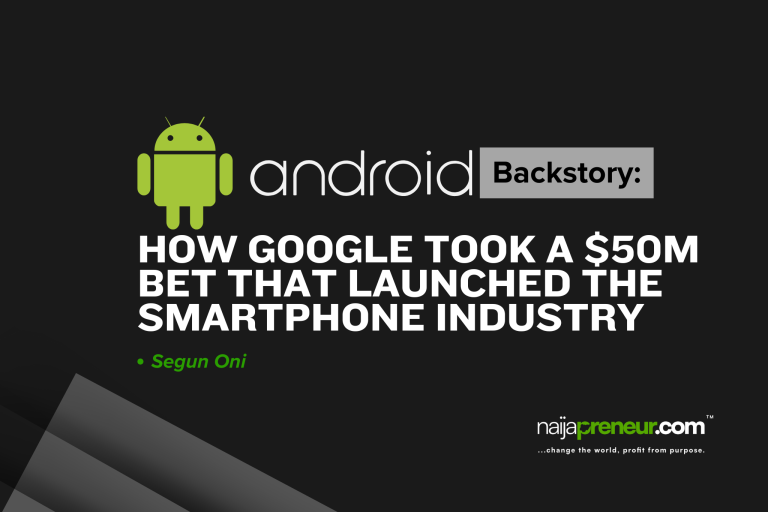In 2005, Google made a seemingly small acquisition that raised eyebrows—$50 million for a 22-month-old startup. Today, that startup powers 3.9 billion users, earns more than Snapchat, Airbnb, and Uber combined, and dominates the mobile world. Here’s how Google’s purchase of Android reshaped the future of technology.
The Origins of Android: A Pivot to Mobile
In 2003, Andy Rubin founded a startup in Palo Alto with an ambitious idea: create an operating system for digital cameras. However, as the team analyzed emerging trends, they realized something huge:
- Standalone cameras were being replaced by mobile phones.
- In 2004, 675 million phones were shipped, compared to just 178 million PCs.
This shift led the team to pivot to mobile. Their plan? To charge licensing fees for their OS, similar to Microsoft’s model with Windows. But when they pitched Samsung in Seoul, they were laughed off. Samsung told them, “You have 6 people. Microsoft has thousands.”
Google Sees What Others Don’t: A Strategic Move
With the team running low on funds, Larry Page at Google saw an opportunity others missed. He recognized that mobile wasn’t just about software—it was about controlling the gateway to the internet. If Microsoft dominated mobile the way it had PCs, Google’s future would be at risk.
When Rubin reached the monetization slide of his pitch, Page cut him off, saying: “Don’t worry about that. Just build the best possible phone.”
The $50M Acquisition: Google’s Strategic Masterstroke
In 2005, Google acquired Android for just $50 million—a tiny sum for a company that would go on to revolutionize the tech world. Google made three bold moves after the acquisition that changed everything:
- Kept Android Secret for Two Years: Google refined the platform behind closed doors.
- Made Android Open-Source: Android became free and open to anyone, allowing developers and manufacturers to use and modify it.
- Released New Versions Yearly: By quickly improving Android with annual updates, Google rapidly caught up to its competitors.
The Open Handset Alliance: Building a Mobile Ecosystem
In November 2007, Google unveiled the Open Handset Alliance—a coalition of 34 companies working together to create a new mobile ecosystem. Key players included:
- HTC/Samsung: Building cutting-edge hardware.
- Qualcomm: Optimizing chip performance.
- T-Mobile: Opening distribution channels.
- Motorola: Providing radio expertise.
But Google added one crucial requirement: in order to use Android, manufacturers had to meet Google’s standards. This included:
- Passing compatibility tests.
- Pre-installing Google’s apps (with prominent placement).
- Setting Google Search as the default.
In exchange for offering the platform for free, Google captured users’ attention, which became their most valuable asset.
The Unstoppable Flywheel Effect
This strategy created a powerful flywheel:
- Free Android – More manufacturers adopted it.
- More phones – More users.
- More users – More developers created apps.
- More apps – Even more users.
By 2016, Google’s $50 million investment had transformed into:
- $31 billion in revenue.
- $22 billion in profit.
- 30% cut of all app sales.
- $100 billion+ in mobile ad revenue annually.
- 70% of global smartphones running Android.
Expanding Beyond Phones: Google’s Broader Ambition
But Google wasn’t finished. They expanded Android beyond smartphones with impressive precision:
- 2011: Tablets (Android Honeycomb).
- 2014: Wearables (Android Wear).
- 2014: TVs (Android TV).
- 2017: Cars (Android Automotive).
Each new platform was designed to feed data back into Google’s empire, creating even more user engagement and ad revenue opportunities.
The Winning Formula: Control the Platform
The secret to Android’s success wasn’t just about creating popular devices or apps. It was about controlling the platform—owning the entire mobile ecosystem, from hardware to software to services. Google’s strategy was clear:
- Control the platform, not just the products.
- Think in decades, not just quarters.
The Attention Economy: A New Opportunity for Entrepreneurs
Today’s founders are facing a similar shift in the attention economy. Traditional advertising costs are skyrocketing, and cold outreach is becoming less effective. But like Google in 2005, there is opportunity in the chaos.
To succeed, entrepreneurs need to control their distribution channels, much like Google controlled Android. The best founders are doing this by:
- Building personal brands.
- Creating authentic content.
- Owning their audience.
This new model acts as an “operating system for business,” where the audience is the platform. The benefits are clear:
- Zero marginal cost to scale.
- Audience control = attention control.
- Network effects that grow exponentially.
The Key Takeaway: The Early Movers Win
Just like Google’s early move with Android, today’s entrepreneurs have the chance to capture and control attention. By creating an engaged audience, founders can attract customers, investors, partners, and top talent on autopilot. The early movers in this new era will win, just like Google did with its $50 million Android gamble.
The stage is set. Will you seize the opportunity?


